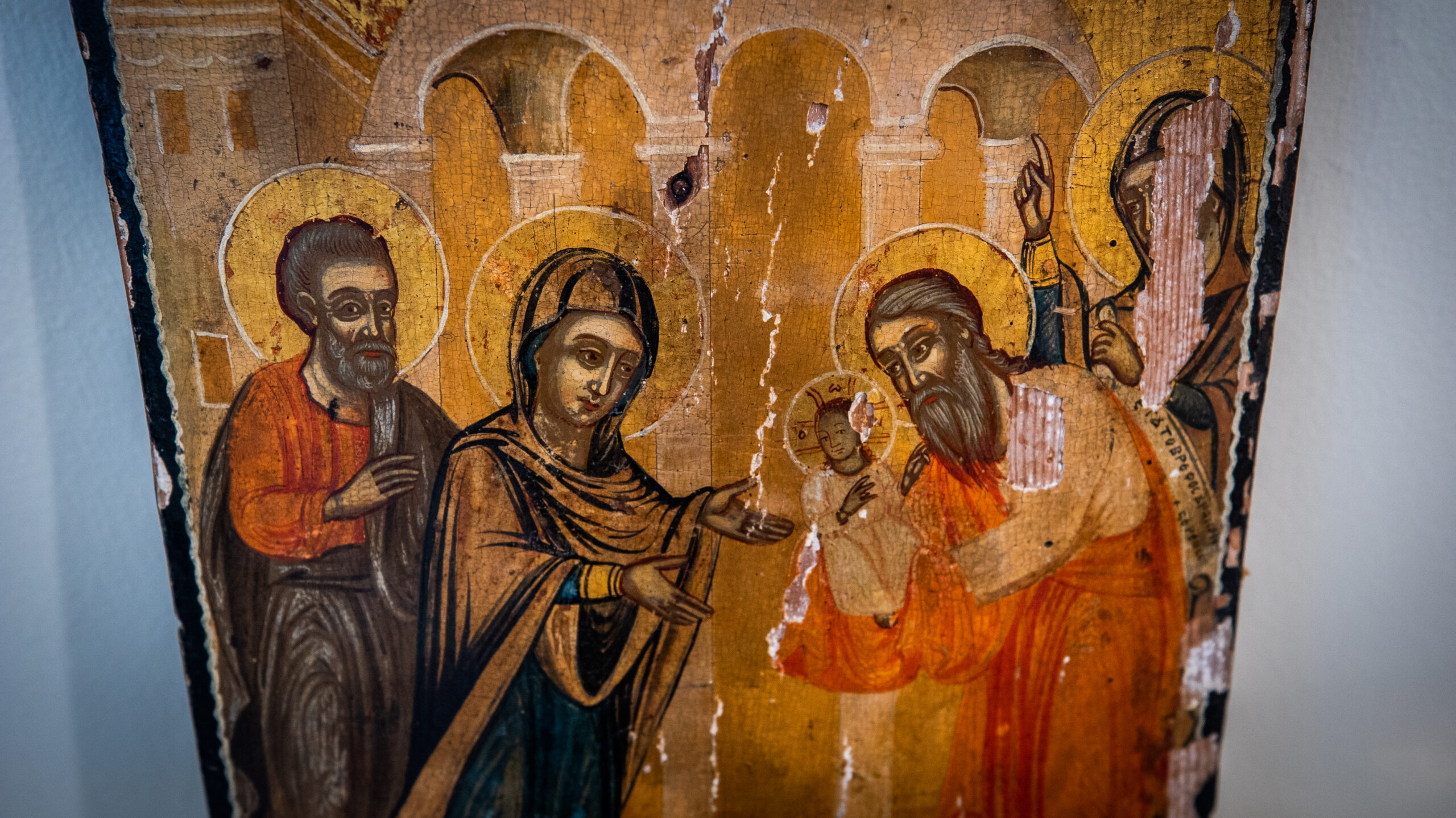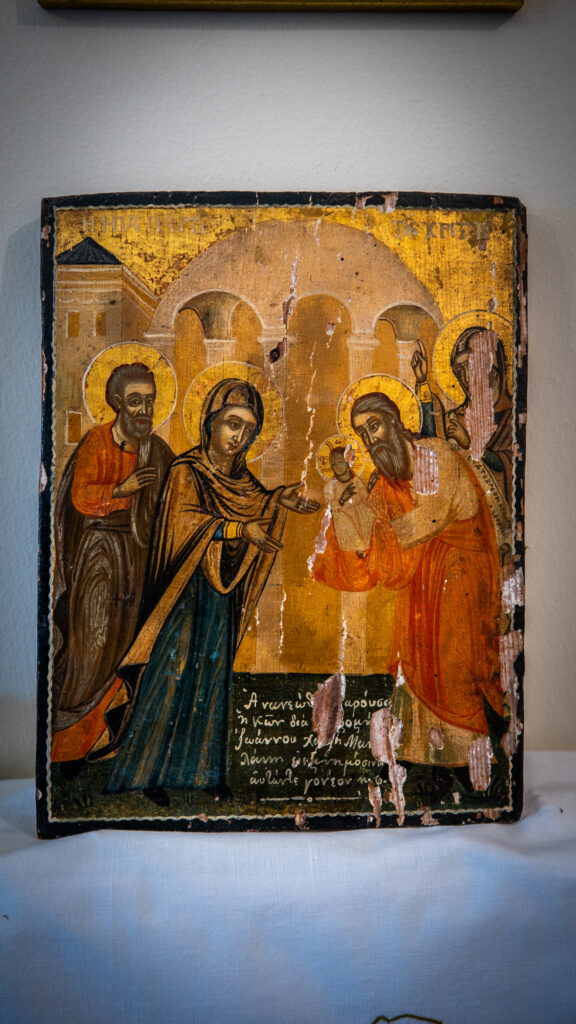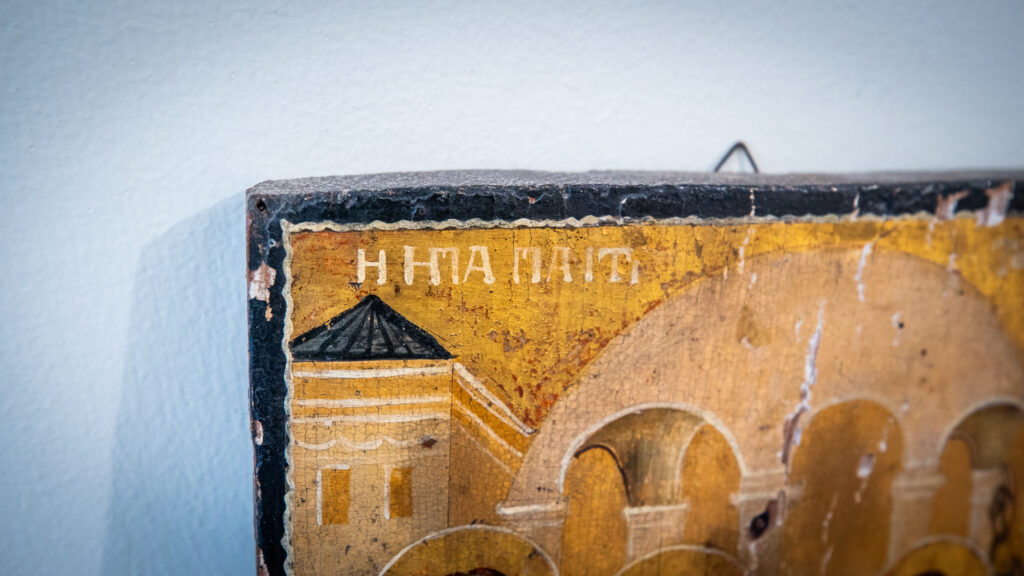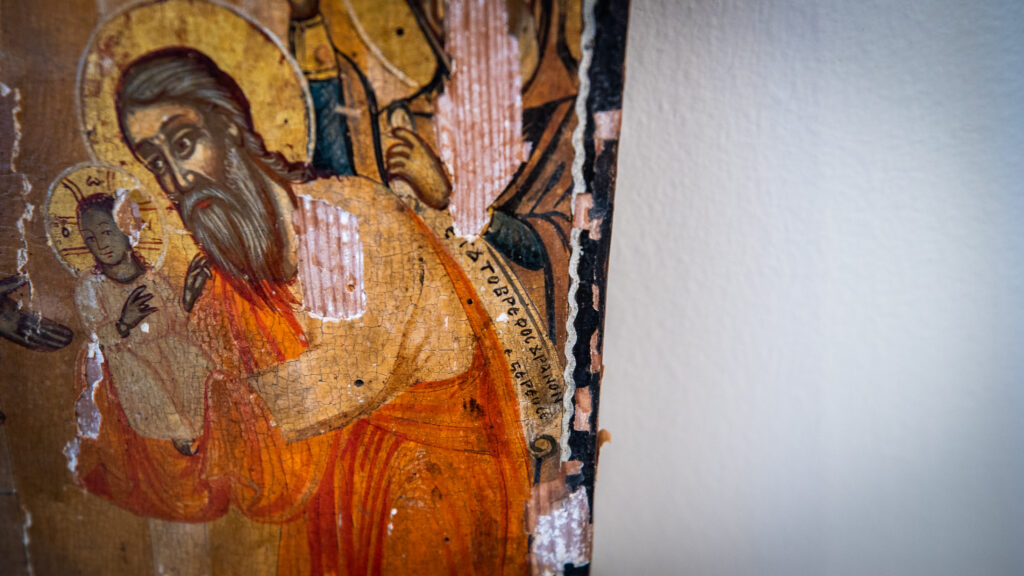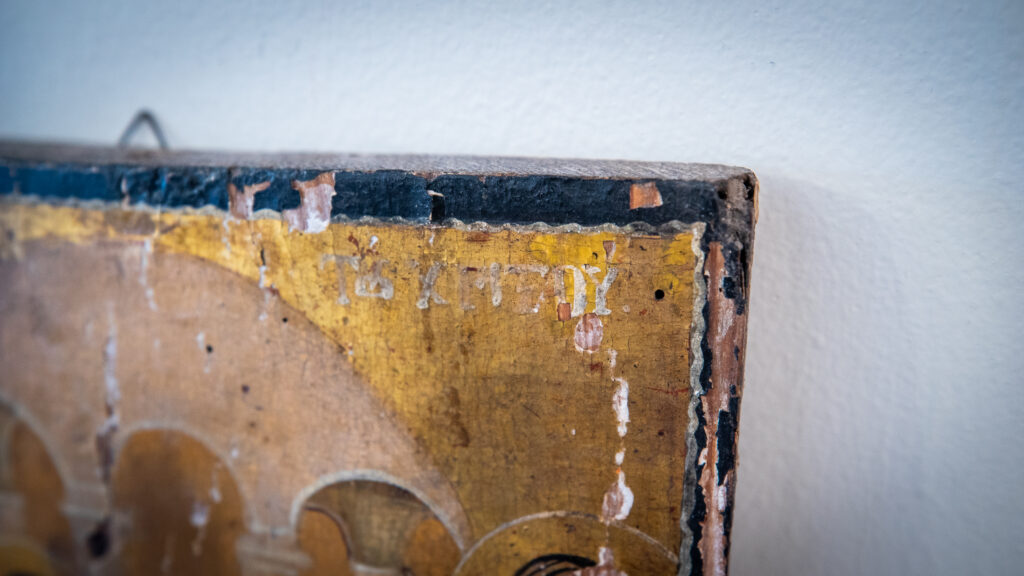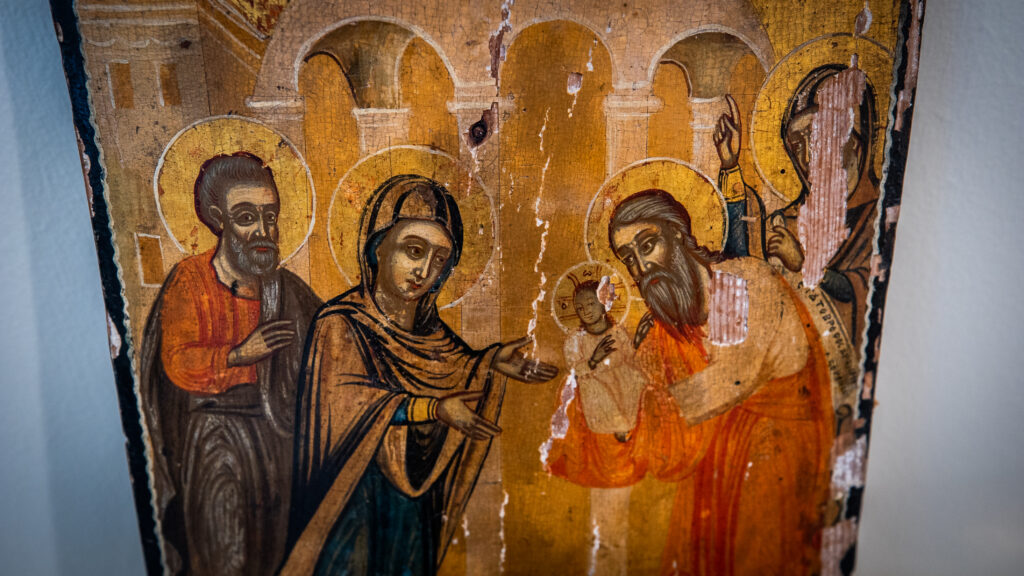Charoula Panagiotidou was born in Thessaloniki in 1948. Her father, Konstantinos Vosinakis, was born in Panormos, Propontis, in 1910. Her mother, Katina Kouvala, was born in Thessaloniki in 1923, but her origins were from Myriofyto in Eastern Thrace.
Konstantinos Vosinakis lost his father at the age of ten, so he had to take on the responsibility of leading the family from a very young age. After the retreat of the Greek army, he and his family were persecuted out of Panormos and resettled in Kavala. He finished his military service and settled in Thessaloniki, where he became a trader dealing in fruit and dried nuts. He first lived in the area of Kassandros, around the corner from Alaca Imaret Mosque, but moved with his family to his wife’s family house in Kalamaria in the 1950s.
Katina’s parents, Theofilos and Pinelopi Kouvala were born and raised in Myriofyto of Eastern Thrace, where they also later got married. Theofilos Kouvalas, known as Neoklis, was born in 1877, and Pinelopi Kouvala in 1890. When they came to Greece, they brought their household goods with them. They stayed in the refugee settlement of Agia Foteini at first, but soon were given a plot of land on I. Kouskoura Street where they built a single-story house. In 1927, Theofilos Kouvalas, who was probably a sailor, bought a motor sailboat named ‘Agios Dimitrios’ with his brother.
Pinelopi Kouvala brought many religious icons to Greece from Myriofyto, even some of substantial size. She donated most of them to a small monastery run by nuns near the family home in Kalamaria. Pinelopi often attended mass there, because the nearest church of Agios Eleftherios was too far away. At some point, the monastery closed down and was later demolished. Since then, the fate of the icons remains unknown.
The family kept two icons: a silver-plated one with Jesus and the Virgin Mary, which was passed down to Charoula Panagiotidou’s brother, and a second one that she kept for herself; a wooden icon depicting The Presentation of Jesus at the Temple. According to scripture, Mary and Joseph took the Infant Jesus to the Temple in Jerusalem where he was welcomed by the elderly priest Simeon, thus fulfilling the promise given to the priest that he would not die before seeing Christ. With his wish fulfilled, Simeon happily whispered: ‘Lord, now let your servant depart in peace…’ The icon bears an inscription saying that it was restored by Chatziemmanouil, Pinelopi Kouvala’s grandfather, in memory of his parents.
This is the object that carries the most special sentimental value for Charoula Panagiotidou. In her own words:
What is special about this heirloom is that it connects me with my grandmother, because she believed that the icon performed miracles and she had asked for one for herself: to live long enough to see me marry and then die, like Agios Simeon. Her wish was fulfilled. Grandma lived to be more than 90 and not only did she get to come to my wedding, she also lived long enough to have great-grandchildren.
